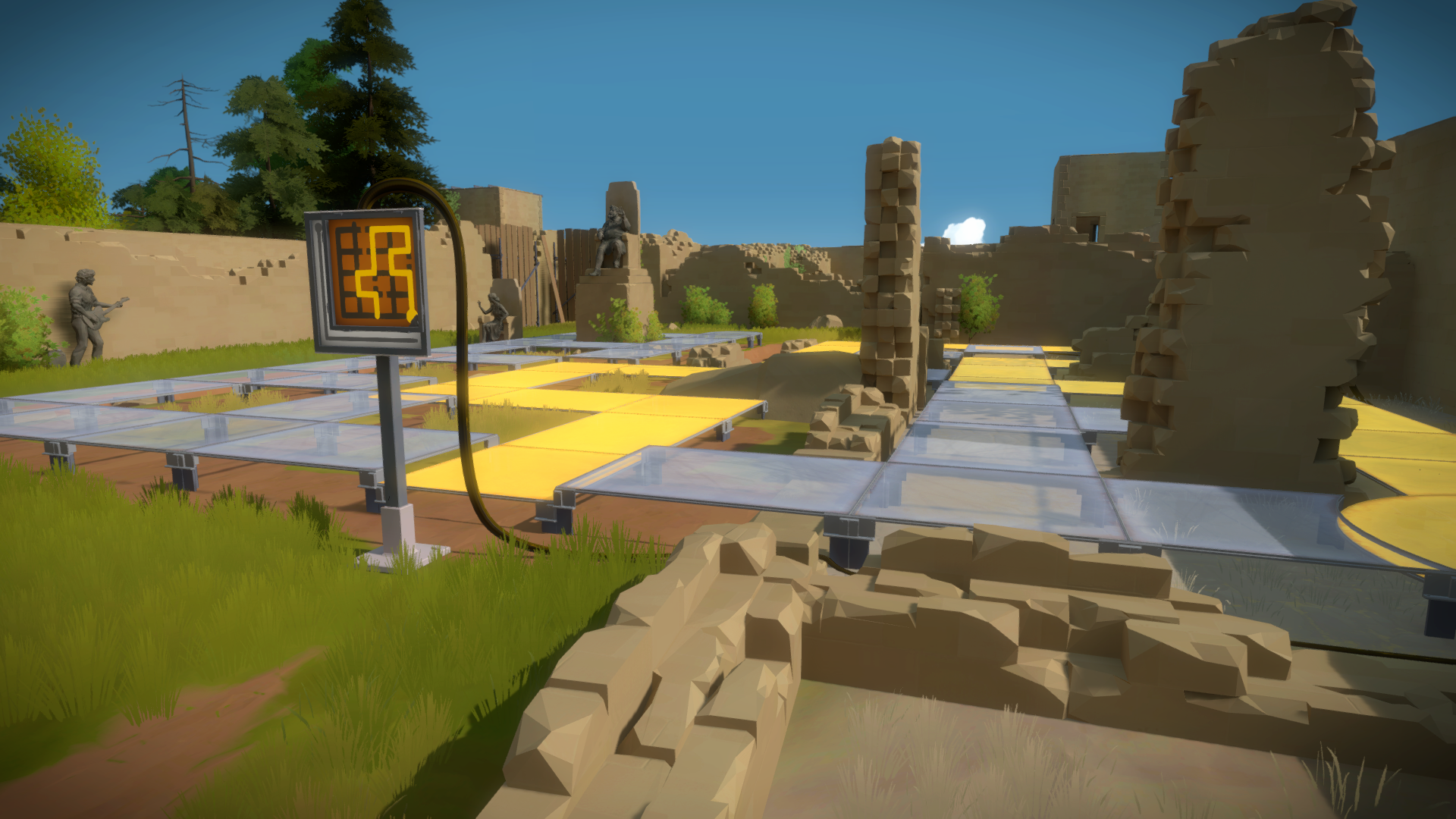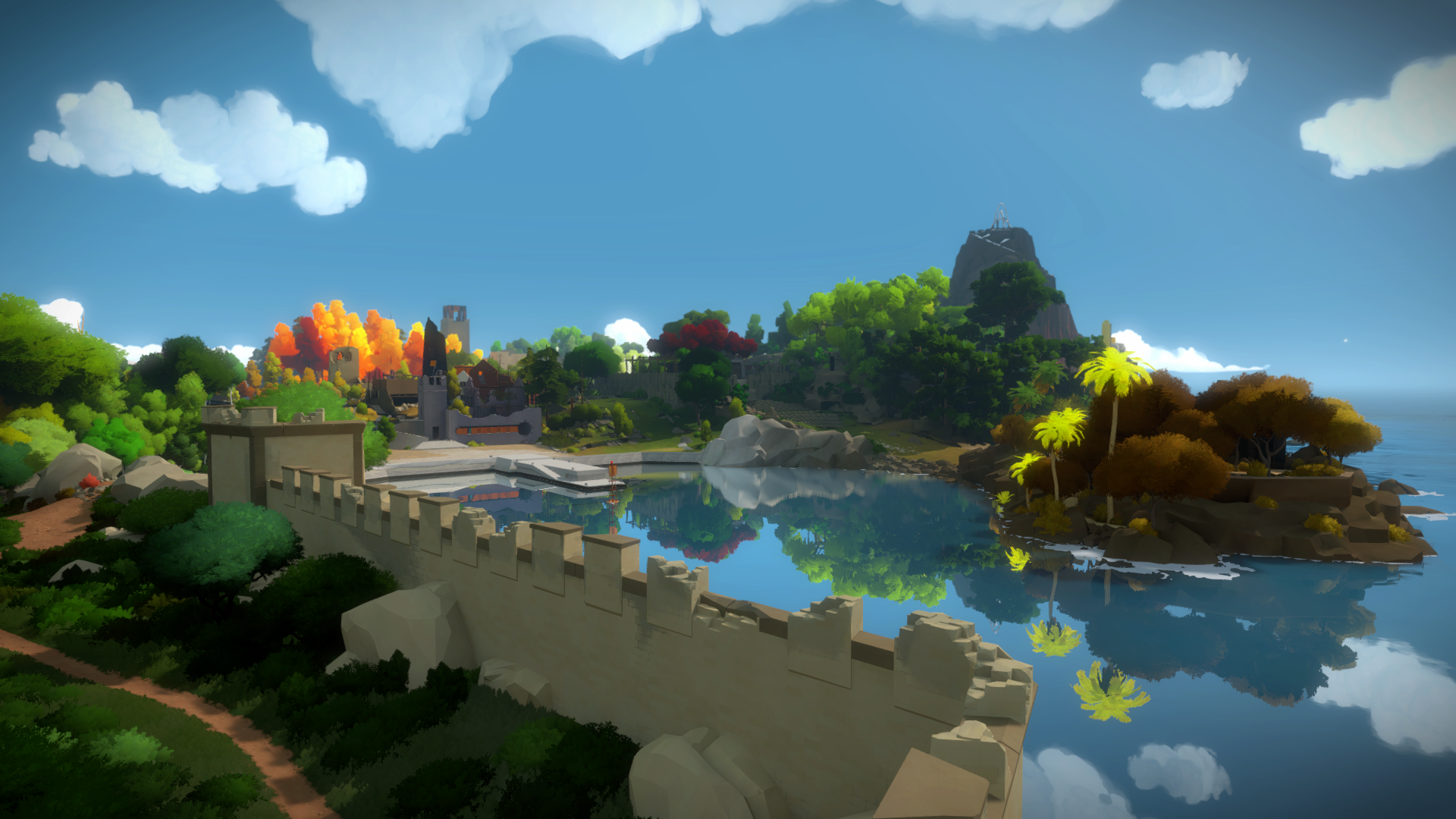The Witness review
Myst is considered something of a legend in the gaming community, a foundational piece in the history of PC gaming. The Witness isn’t exactly a spiritual successor, but there’s no doubt that it draws strong inspiration from Myst.
The Witness simply begins. There’s no introduction, no explanation, no setup. As the player, I found myself on a small island that combined natural beauty and manmade structures. Each new region gave me pause, and I took quite a few screenshots of the environment. Everything is full of color and vibrancy, and that infuses the early hours with a recurring sense of awe. It pairs well with the resounding mystery at the core of the game. What happened to the island? Where is everyone? How did I (as the “protagonist”) get here?
I felt keen parallels to Lost’s “DHARMA Initiative.” It’s clear that there were experiments of some sort on the island; everything has a scientific and cultivated feel to it. The obvious absence of life (including animals) added a dark undertone, and I felt on-edge as I explored the island. I almost expected the Smoke Monster or some other horror to simply appear in the jungle or underground bunker.
Deserted ruin
At its core, The Witness is a game about puzzles. Jonathan Blow (who you may recall from my Braid review) designed The Witness to revolve around nonverbal communication. Well over 500 puzzles exist to stymie and baffle players; completing puzzles in each zone raises an obelisk that sends a beam of light to the center of the island. It’s clear that there's something at the island’s heart, but only by activating all of the “light towers” can this mystery be solved.
…at least, that was my perceived premise. The Witness never really delivers any sense of direction. While that promotes a “spirit of discovery,” the desire to explore clashes with the complex puzzles scattered across the island. The game is beautiful and serendipitous in a way that only a Pacific island can be, but the sheer scale of this game far exceeded my patience and puzzle-solving capabilities (especially because I really wanted to get to the ending and find out the truth about the island).
The endgame
Trying to spell out the mechanics of The Witness poses something of a problem, as each puzzle sequence is its own beast. During my time with the game, I found a few trends and recurring ideas as I went, but I mostly tackled each new puzzle as an individual challenge. However, all puzzles are “point-to-point,” meaning that they require a line to be drawn from one starting circle to an ending circle. This maze-like system remains consistent throughout the game, although each puzzle has a unique set of (unexplained) prerequisites to determine and fulfill.
However, there’s no set order to these “tests.” (And yes, they certainly felt that way—like some secret research initiative was testing my capabilities.) Each section of the island offers its own visual style and color scheme, and the puzzles often correlate to the world itself. This segmented system allows for a very personalized approach, which in turn enabled me to explore the island at my own pace and tackle the puzzles in whatever order I wished; if something was too hard, I could always move on and come back to it later without being locked out of other puzzles in that region.
But for all of the strengths to this non-linear approach, it’s impossible to review The Witness and not hone in on the near-brutality of its puzzles. Jonathan Blow said he intentionally developed a game not for a mass audience, and boy did he succeed. I found many of the puzzles to be too complex, and I didn’t feel invested enough to spend an hour contemplating every single challenge. As I moved through the world, the back half of my experience included going back to previously-unsolved puzzles; I endured more than my share of headaches as I continue banging my head against these barriers to my progress. That’s definitely not my preferred gaming style, but I can still appreciate The Witness for what it is.
In a nutshell
Jonathan Blow set out to create another mind-bending puzzler, and his follow-up to Braid easily eclipsed that initial vision. The Witness surpassed my expectations in some ways (puzzle complexity, game design, and visual style) without ever delivering answers to the questions it prompted. The ending is fairly insane and far from what I expected, but the “WOW!” factor doesn’t quite help me forget my other qualms.
Pros
+ The Island
+ Non-linear advancement
Cons
- Puzzle complexity
- Game length
- Unanswered questions



